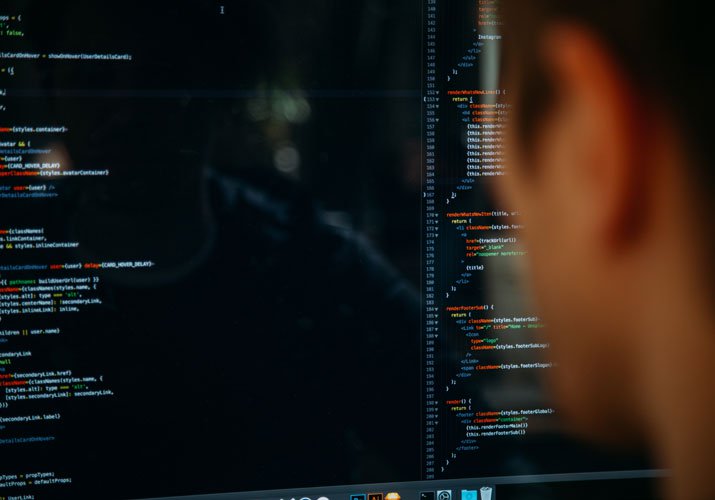With consumer expectations of cleanliness, hygiene, and sanitation higher than ever, tactical cleaning in a COVID-19 world is no longer cutting it: The pressure is on for grocers to expand and redefine their cleaning programs, including adopting new procedures and standards, and investing in automation. That was the consensus among a panel of retail and robotics experts during a recent webinar hosted by Progressive Grocer.
Participating in the April 28 webinar–Rising to Today’s Grocery Sanitation Challenge: Driving Success Through Best Practices & Robotics–was Brain Corp’s Vice President of Sales, Chris Wright; Tennant’s Product Manager of Robotics, Dennis Collins; and Dave Frank, President of AICS (American Institute for Cleaning Sciences). They each weighed in on how food retailers are faced with meeting new and heightened cleaning and sanitation standards due to the present-day pandemic. We wanted to share the key takeaways.
But first, some surprising stats.
According to a new C+R Research report cited by Gina Acosta, Progressive Grocer and Retail Leader’s Executive Editor and the webinar’s moderator, 60% of American consumers are now too terrified to go to a grocery store due to the coronavirus, with 73% shopping less in person. During normal (read: pre-pandemic) times, shoppers visited food retailers on an average twice per week; that number is now only once per week, with 45% disinfecting their groceries when they get home, according to the survey. And while 43% of grocer’s are disinfecting their environments, a third of shoppers feel more can be done to sanitize stores, and half believe more should be done to keep store employees safe.
Here are five key insights from the Progressive Grocer webinar:
1. It’s time to upgrade and expand SOPs
In fewer than 60 days, the commercial cleaning industry has had to make fast adjustments to standard operating procedures (SOPs) in order to prevent further spread of COVID-19. For food retailers, this has included bringing sanitation practices to the front of house, when it is normally conducted after hours or behind the scenes. These practices include disinfecting highly touched objects and touchpoints such has door handles, shelves, and shopping carts.
2. Get a better clean with robots
According to Brain Corp’s Chris Wright, with germ panic at an all-time high, retailers are asking, “How do we do more with the workforce we already have?” The reality is, essential businesses need to increase cleaning frequency and intensity with the same or even fewer staff. Adopting technology–such as autonomous floor scrubbers (see video) to handle floor cleaning–will free up already stretched resources to handle sanitizing high contact areas. In fact, Brain Corp is seeing a dramatic increase in the usage of its robotic floor scrubbers since the pandemic started.
COVID-19 notwithstanding, there are many compelling reasons more and more grocers are turning to robots (a.k.a. cobots) to fill in labor gaps: no infrastructure costs, easy deployment, safe operability during store hours, and data capture for valuable proof of work. Not to mention, these autonomous robots are built on existing manual technology cleaning staff are likely already familiar with.
3. Cleaning has become a brand value
More than ever, customers are paying attention: They can see dirt and therefore make assessments about whether or not a store is clean. On the other hand, viruses are invisible, so it’s important that customers witness store employees disinfecting (preferably with an EPA-grade sanitizer) while wearing PPE (personal protection equipment). Robotic scrubbers are another visible demonstration of investment and commitment to hygiene and cleanliness. When shoppers see this, they have a greater comfort level shopping. What and how a retailer’s team cleans makes an impression about its operations and can have a lasting impact on its brand image.
4. Support frontline workers
With robots taking on labor-intensive tasks, this technology brings greater efficiency to cleaning operations and gives already exhausted employees the flexibility to handle higher value tasks (sanitizing, restocking shelves, greeting and assisting customers). Autonomous robots are also safer to operate than most manual machines: Once the robot is “trained,” they can begin scrubbing, vacuuming, or executing other tasks with the push of a button.
5. Cleaning protects and drives revenue
The time to shift thinking from seeing cleaning as a cost to something that impacts revenue is now. As the above stats clearly indicate, in the new COVID-19 world, customers are afraid to shop: They are scrutinizing cleanliness at grocery stores like never before and will only go to ones they believe are clean and hygienic. Businesses have just one shot to convey to customers a sense of commitment to their health and well-being, and it starts with floors. Floors make a first impression and set the tone for the entire shopping experience. If a competitor is cleaning them–or any part of the retail environment–better than your store, it will translate into lost costumers and diminished revenue.
Consumer caution and expanded cleaning programs by grocers is the “new normal” approach to health and safety in retail. And it likely will be for the next 12-18 months, or until there is a COVID-19 vaccine. Because, while the virus may become preventable, consumer expectations of clean are expected to remain as they currently are.
If your food retail business is looking for ways to bring greater efficiency and safety to its commercial cleaning operations while boosting its brand image, contact our robotic experts. If you are looking for a more expansive view on how robotics can benefit retailers, download our new 15-minute guide, “How Robots Help Retailers in Today’s Changing World.”


Let Us Know What You Thought about this Post.
Put your Comment Below.